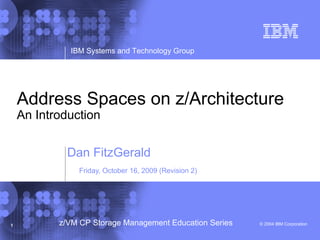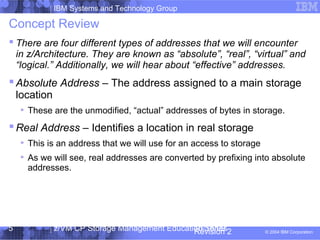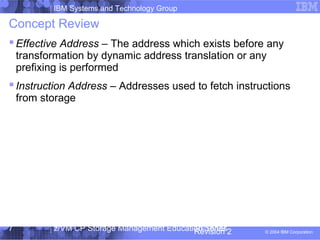This document provides an introduction to address spaces on z/Architecture systems. It defines key concepts like address space, address space control element (ASCE), and address space number (ASN). It explains that each process runs in its own address space, and that different address spaces are selected using the translation mode in the program status word. Primary, secondary, home, and access register modes allow accessing different types of address spaces. ASCEs and ASNs, along with associated tables, allow dynamically switching between address spaces.




















